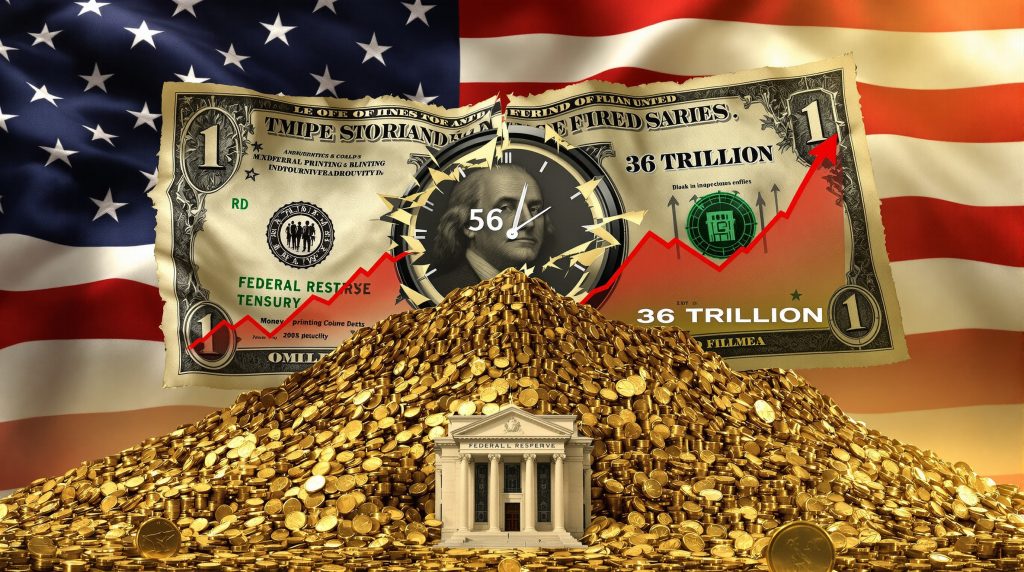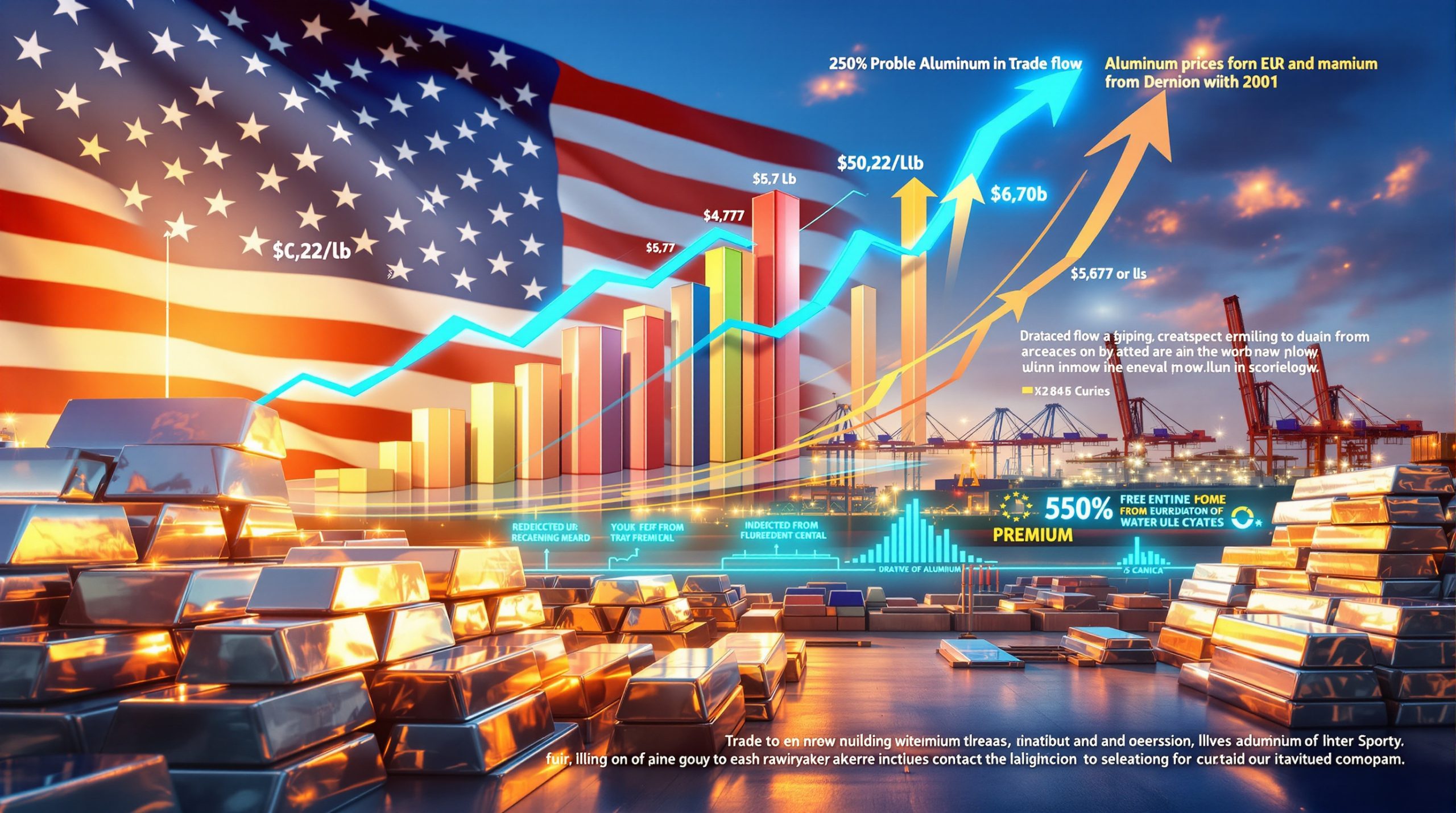The Real Danger Behind U.S. Cheap Money and Rising Debt
The United States faces an unprecedented fiscal challenge with national debt exceeding $34 trillion—approximately 120% of GDP according to U.S. Treasury data. This debt burden, the highest since World War II, represents a significant risk for both domestic and global economic stability. While cheap money policies have temporarily masked structural problems, they've created vulnerabilities that could trigger widespread economic disruption in the coming years. The real danger behind U.S. cheap money and rising debt lies in its potential to undermine long-term economic stability.
What Drives America's Unsustainable Debt Path?
The Perfect Fiscal Storm: Demographic Pressures and Political Gridlock
America's debt trajectory is being propelled by powerful structural forces that transcend political cycles. The aging population has dramatically increased entitlement spending, with Medicare and Social Security now consuming over 36% of federal expenditures according to Congressional Budget Office (CBO) data. Meanwhile, political polarization has made meaningful fiscal reform nearly impossible, leading to persistent budget deficits even during economic expansions.
The Widening Gap Between Revenue and Spending
Recent Congressional Budget Office projections paint a concerning picture: federal spending is expected to grow from 23% of GDP in 2024 to approximately 26% by 2054, while revenue growth lags significantly behind. This structural imbalance ensures continuing deficits regardless of which party controls Washington, creating a self-reinforcing cycle of borrowing that compounds over time and worsens inflation and debt dynamics.
Interest Expense: The Silent Budget Killer
Interest payments on the national debt are projected to reach approximately $1.4 trillion annually by 2034—rivaling what the U.S. spends on defense. This represents a dramatic shift in federal spending priorities, with debt servicing crowding out productive investments in infrastructure, research, and education that could boost long-term economic growth.
Interest payments are projected to become one of the largest categories of federal spending within a decade, creating a dangerous feedback loop where borrowing fuels more borrowing.
Why Are Markets Still Calm Despite Growing Fiscal Risks?
The Dollar's Reserve Currency Status: A Double-Edged Sword
The U.S. dollar's position as the world's primary reserve currency has allowed America to borrow at relatively low interest rates despite mounting debt. However, this privilege isn't guaranteed permanently. Historical reserve currencies from the British pound to the Dutch guilder eventually lost their dominant position when fiscal excesses undermined confidence.
The Federal Reserve's Balancing Act
The Federal Reserve faces increasing pressure to maintain artificially low interest rates to support debt servicing rather than focus on its dual mandate of price stability and maximum employment. This dynamic, known as "fiscal dominance," threatens central bank independence and creates long-term inflation risks that could undermine economic stability.
Global Investors: How Long Will They Finance American Deficits?
Foreign investors hold approximately 24% of U.S. Treasury securities according to Treasury International Capital data. Any significant reduction in their appetite for U.S. debt could trigger higher bond yields, increasing borrowing costs across the economy and potentially creating market disruptions that could accelerate global recession risks.
What Happens When Cheap Money Disappears?
The Inflation Time Bomb
Prolonged periods of artificially low interest rates and excessive liquidity have historically led to asset bubbles and consumer price inflation. When central banks eventually tighten policy to combat inflation, the adjustment can be painful, as demonstrated by the market volatility following the Federal Reserve's 2022-2023 rate hike cycle when equities experienced significant drawdowns.
The Dollar Depreciation Scenario
A loss of investor confidence could trigger a sell-off of U.S. debt and dollars, leading to currency depreciation. For an import-dependent economy like the United States, this would mean higher prices for everyday goods, eroding purchasing power and disproportionately affecting lower-income households who spend a higher percentage of their income on necessities.
Financial Market Stress and Economic Contraction
Rising interest rates in response to inflation or reduced investor demand for Treasuries would increase borrowing costs throughout the economy. This could trigger distress in leveraged sectors like commercial real estate, corporate debt markets, and household finance, potentially sparking a broader economic contraction with severe tariff economic implications.
How Could Political Interference Worsen the Crisis?
The Threat to Federal Reserve Independence
Political pressure on the Federal Reserve to maintain low interest rates despite inflationary pressures represents a significant risk to economic stability. Historical examples from countries like Argentina and Turkey demonstrate how political interference in central banking can lead to runaway inflation and currency collapse, as highlighted in recent analyses of debt sustainability.
The Gold Price Signal: A Warning from Markets
Gold's recent surge to record highs reflects growing investor concern about fiscal and monetary policy. As a traditional inflation hedge and safe-haven asset, gold prices at record highs signal skepticism about the sustainability of current policies and the future value of fiat currencies.
The Dangerous Allure of Ultra-Low Interest Rates
Proposals to slash interest rates to around 1% despite an economy not in recession would provide short-term stimulus at the cost of long-term stability. Such policies risk reigniting inflation, further inflating asset bubbles, and encouraging additional borrowing by both government and private sectors.
What Are the Global Implications of U.S. Fiscal Instability?
Contagion Risks in Global Financial Markets
As the issuer of the world's primary reserve currency and largest economy, U.S. fiscal instability poses systemic risks to global markets. Bond market volatility could quickly spread to equity markets, emerging market currencies, and commodity prices, creating widespread financial turbulence.
The Threat to Global Trade and Supply Chains
Dollar instability would complicate international trade, potentially accelerating the fragmentation of the global economy into competing currency blocs. This could disrupt supply chains and increase transaction costs in international commerce, reducing economic efficiency and productivity.
Geopolitical Power Shifts
America's fiscal challenges could accelerate the relative decline of U.S. global influence, creating opportunities for strategic competitors to expand their economic and diplomatic reach. Historical precedent suggests that fiscal overextension often precedes geopolitical retrenchment, as resources become increasingly constrained.
How Can Investors Protect Themselves?
Diversification Beyond Traditional Assets
The potential for currency depreciation, inflation, and financial market stress suggests investors should consider diversifying beyond traditional stocks and bonds. Alternative assets with inflation-protection characteristics may provide portfolio resilience during periods of monetary instability.
The Case for Hard Assets
Physical assets with intrinsic value—including precious metals, productive real estate, and certain commodities—have historically preserved purchasing power during periods of currency debasement and financial instability. These assets often perform well when confidence in fiat currencies wanes, with gold price forecast insights showing continued strength in this sector.
- Gold and silver have traditionally served as monetary metals that maintain value during currency crises
- Income-producing real estate can provide both inflation protection and cash flow
- Select commodities with supply constraints may appreciate during inflationary periods
- Treasury Inflation-Protected Securities (TIPS) offer direct government protection against inflation
Geographic Diversification
Exposure to economies with stronger fiscal positions and sustainable growth models may help mitigate the impact of U.S. fiscal challenges on investment portfolios. This includes both developed markets with disciplined fiscal management and emerging markets with favorable demographics and growth potential.
Can America Change Course Before Crisis Strikes?
The Narrow Path to Fiscal Sustainability
Avoiding fiscal crisis requires addressing structural budget imbalances through a combination of spending restraint, revenue enhancement, and economic growth. Historical examples like Canada in the 1990s demonstrate that fiscal reform is possible with sufficient political will and bipartisan cooperation.
The Role of Structural Economic Reforms
Beyond addressing the immediate fiscal challenges, improving productivity growth through infrastructure investment, education reform, and regulatory modernization could help America grow its way out of debt over the long term. Productivity enhancements are critical for maintaining economic competitiveness and fiscal sustainability.
The Importance of Central Bank Independence
Preserving Federal Reserve independence is crucial for maintaining investor confidence and ensuring that monetary policy decisions are based on economic fundamentals rather than political expediency. Strong institutions with proper checks and balances help maintain market confidence and economic stability.
What Are the Warning Signs of an Approaching Crisis?
Rising Bond Market Volatility
Increased volatility in Treasury yields, widening credit spreads, and failed or undersubscribed government bond auctions would signal growing investor concern about U.S. fiscal sustainability. Bond markets often serve as the canary in the coal mine for broader economic problems.
Accelerating Inflation Expectations
A significant increase in market-based measures of inflation expectations, such as breakeven rates on Treasury Inflation-Protected Securities (TIPS), would suggest investors are losing confidence in the Federal Reserve's ability to maintain price stability. Current 5-year breakeven rates near 2.3% remain within historical norms but bear watching.
Dollar Weakness Against Major Currencies and Gold
Persistent dollar depreciation against both major currencies and traditional stores of value like gold would indicate eroding confidence in America's fiscal and monetary management. The Dollar Index (DXY) and gold-to-dollar ratio are important indicators to monitor for early warning signs.
Understanding America's Debt Challenge
How does U.S. debt compare to other developed economies?
While several developed economies have higher debt-to-GDP ratios than the United States, America's combination of structural deficits, unfunded entitlement liabilities, and reserve currency status creates unique risks and responsibilities. Japan's debt exceeds 260% of GDP, but most is domestically owned, creating different dynamics than U.S. debt markets.
Could the U.S. simply inflate away its debt?
While inflation reduces the real value of outstanding debt, attempting to inflate away debt would likely trigger higher borrowing costs, currency depreciation, and economic instability—potentially causing more harm than benefit. Additionally, an increasing portion of U.S. debt is inflation-protected or short-term, limiting the effectiveness of this strategy.
What impact would higher interest rates have on the federal budget?
Each 1% increase in interest rates adds approximately $250-300 billion to annual federal interest costs once fully reflected across the debt portfolio, according to CBO sensitivity analysis. This sensitivity creates significant fiscal vulnerability to monetary tightening, especially as the average maturity of U.S. debt has shortened in recent years.
How might international creditors respond to U.S. fiscal deterioration?
Foreign holders of U.S. debt might gradually reduce their Treasury holdings, demand higher yields, or accelerate efforts to develop alternative reserve assets and payment systems that reduce dependence on the dollar. Countries like China have already reduced their Treasury holdings in recent years, though gradually to avoid market disruption.
What role does partisan politics play in America's fiscal challenges?
Political polarization has made comprehensive fiscal reform increasingly difficult, with each party reluctant to compromise on core priorities. This gridlock perpetuates deficits regardless of which party controls government, as meaningful reform typically requires bipartisan cooperation.
The Path Forward
America's fiscal challenges represent one of the most significant economic risks facing investors and policymakers today. While the timing of potential crisis remains uncertain, the structural imbalances in U.S. public finances are unsustainable over the long term.
Addressing these challenges requires political courage, economic creativity, and public engagement. The alternative—continuing down the current path of fiscal excess—risks undermining the economic stability and prosperity that have defined the American experience for generations.
For investors, understanding these dynamics is essential for navigating an increasingly complex and potentially volatile financial landscape. By recognizing the real dangers behind America's cheap money and rising debt, market participants can better position themselves for the challenges and opportunities that lie ahead.
Looking for Early Investment Opportunities in Major Mineral Discoveries?
Gain a critical market advantage by receiving instant alerts on significant ASX mineral discoveries through Discovery Alert's proprietary Discovery IQ model, which transforms complex data into actionable investment insights. Explore why historic discoveries can generate substantial returns by visiting Discovery Alert's dedicated discoveries page and position yourself ahead of the market with a 30-day free trial.




